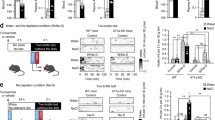Abstract
We report here a comparative analysis of the involvement of a number of components of the renin-angiotensin system in the performance of simple and complex forms of drinking behavior and thirst-associated non-drinking types of behavior. On central (intracerebroventricular) microinjection, [des-Asp1]-angiotensin I at doses equieffective to those of angiotensins II and III was found to be involved only in the performance of simple (taking water from the bowl) and linked forms of activity (comfort behavior, stress grooming, orientational-investigative, and feeding behavior). Angiotensin II was involved in the central mechanisms of complex acquired drinking behavior, selectively modulating its key stages (initial, final), while angiotensin III was involved only in the mechanisms of reproduction of the complex skill. All three substances induced “innate patterns of behavior” specific for each compound, these occurring at fixed periods of time after intracerebral microinjection. The effects of these substances were selectively suppressed by the AT1 receptor blocker losartan potassium.
Similar content being viewed by others
References
P. K. Anokhin, Biology and Neurophysiology of the Conditioned Reflex [in Russian], Meditsina, Moscow (1968).
R. Ya. Vlasenko and A. V. Kotov, “Comparative analysis of the motivatiogenic activity of angiotensins in rats in experimental conditions,” Zh. Vyssh. Nerv. Deyat., 53, No. 1, 113–116 (2003).
A. V. Kotov, “Plasticity of the dominant motivation,” in: Functional Systems of the Body [in Russian], K. V. Sudakov (ed.), Meditsina, Moscow (1987), pp. 141–147.
B. J. Rolls and E. T. Rolls, Thirst [Russian translation], Meditsina, Moscow (1984).
K. V. Sudakov, Biological Motivations, [in Russian], Meditsina, Moscow (1971).
S. M. Tolpygo, “Conjugated forms of angiotensin-II and beta-endorphin in the systems organization of purposive behavior,” Vestn. Ros. Akad. Med. Nauk, 2, No. 6, 52–55 (1999).
S. M. Tolpygo, E. I. Pevtsova, D. A. Andreev, M. F. Obukhova, and A. V. Kotov, “Drinking behavior in rats in conditions of purposive modulation of renin-angiotensin system activity,” in: Proceedings of the Scientific Conference on Experimental and Applied Physiology [in Russian], GU NIINF, Moscow (’998), Vol. 7, pp. 143–157.
R. Hinde, Animal Behavior [Russian translation], Mir, Moscow (1975).
R. Ardaillou, “Angiotensin II receptors,” J. Amer. Soc. Nephrol., 1, No. 10, 30–39 (1999).
D. R. Brown and S. G. Holtzman, “Suppression of drinking by naloxone in the rat: a further characterization,” Eur. J. Pharmacol., 5, No. 69, 331–340 (1981).
M. De Gasparo, K. J. Catt, A. T. Chiu, M. Drew, J. W. Harding, and T. Inagami, “International union of pharmacology. XXIII. The angiotensin II receptors,” Pharmacol. Rev., 52, No. 3, 415–472 (2000).
J. T. Fitzsimons, “Angiotensin, thirst, and sodium appetite,” Physiol. Rev., 78, No. 3, 583–686 (1998).
I. Inagami, “Molecular biology and signaling of angiotensin receptors: an overview,” J. Amer. Soc. Nephrol., 32, No. 10, 2–7 (1999).
E. A. Kramer, J. W. Harding, and J. W. Wright, “Angiotensin II-and IV-induced changes in cerebral blood flow: roles of ATI, AT2, and AT4_receptor subtypes,” Regul. Pept., 22, No. 68, 131–138 (1997).
L. J. Pellegrino, A. S. Pellegrino, and A. J. Cushman, A Stereotaxic Atlas of the Rat Brain, Plenum Press, New York (1979).
M. I. Phillips and C. Sumners, “Angiotensin II in central nervous system physiology,” Regul. Pept., 4, No. 78, 1–11 (1998).
V. Raghavendra, K. Chopra, and S. K. Kulkarni, “Brain renin-angiotensin system (RAS) in stress-induced analgesia impaired retention,” Peptides, 20, No. 3, 335–342 (1999).
M. K. Sim and R. Radhakrishnan, “Novel central action of des-Asp-angiotensin I,” Eur. J. Pharmacol., 5, No. 2, 1–3 (1994).
J. W. Wright and J. W. Harding, “Important roles for angiotensin III and IV in the brain renin-angiotensin system,” Brain Res. Rev., 27, No. 25, 96–124 (1997).
R. S. Weisinger, J. R. Blair-West, P. Burns, and D. A. Denton, “Intracerebroventricular infusion of angiotensin II increases water and ethanol intake in rats,” Amer. J. Physiol. Regul. Integr. Comp. Physiol., 227, No. 1, 162–172 (1999).
Author information
Authors and Affiliations
Additional information
__________
Translated from Zhurnal Vysshei Nervnoi Deyatel’nosti imeni I. P. Pavlova, Vol. 56, No. 1, pp. 102–110, January–February, 2006.
Rights and permissions
About this article
Cite this article
Vlasenko, R.Y., Kotov, A.V. Effector peptides of the renin-angiotensin system in the central mechanisms of acquired and innate behavior in thirst in rats. Neurosci Behav Physiol 37, 263–270 (2007). https://doi.org/10.1007/s11055-007-0010-y
Received:
Accepted:
Issue Date:
DOI: https://doi.org/10.1007/s11055-007-0010-y




